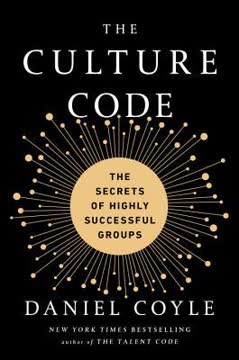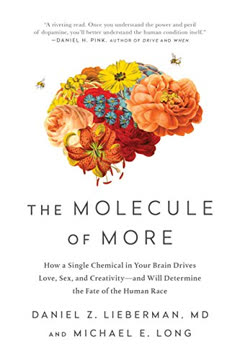Key Takeaways
1. Master the Foundational Sciences for Effective Training
The first edition grew out of an awareness that there was not a book about strength training and conditioning that captured the views of leading professionals in anatomy, biochemistry, biomechanics, endocrinology, nutrition, exercise physiology, psychology, and the other sciences...
Body systems integration. Effective strength and conditioning requires a deep understanding of how the body's systems work together. This includes the musculoskeletal system for movement, the neuromuscular system for control, the cardiovascular system for transport, and the respiratory system for gas exchange. Knowing the macrostructure and microstructure of muscles and bones, how nerves activate fibers, and how oxygen and nutrients are delivered is fundamental.
Energy fuels performance. Understanding bioenergetics is crucial for matching training to metabolic demands.
- The phosphagen system provides rapid ATP for short, high-intensity bursts.
- Glycolysis fuels moderate-duration, high-intensity efforts, potentially leading to lactate accumulation.
- The oxidative system sustains low-intensity, long-duration activities using carbohydrates, fats, and protein.
Knowing when each system predominates helps design appropriate work-to-rest ratios and training intensities.
Mechanics and hormones. Biomechanics explains how forces are produced and transmitted through the body's lever systems, highlighting concepts like torque, mechanical advantage, and muscle action types (concentric, eccentric, isometric). The endocrine system, through hormones like testosterone, growth hormone, and cortisol, mediates adaptations to training stress, influencing muscle growth, tissue repair, and energy metabolism.
2. Understand How the Body Adapts to Anaerobic and Aerobic Training
Updated research—specifically in the areas of high-intensity interval training, overtraining, agility and change of direction, nutrition for health and performance, and periodization—helps readers better understand these popular trends in the industry.
Anaerobic adaptations. Training without oxygen as the primary energy source leads to specific changes.
- Neural adaptations enhance motor unit recruitment, firing rate, and synchronization, improving force and power output.
- Muscular adaptations include hypertrophy (increased fiber size), fiber type transitions (e.g., Type IIx to IIa), increased anaerobic enzyme activity, and enhanced phosphagen and glycogen stores.
- Connective tissues (tendons, ligaments, bone) also adapt to increased loading, becoming stronger.
Aerobic adaptations. Training with oxygen as the primary energy source drives different changes.
- Cardiovascular adaptations include increased VO2 max (maximal oxygen uptake), stroke volume, and cardiac output, along with reduced resting heart rate and improved capillary density.
- Respiratory adaptations enhance ventilation efficiency.
- Muscular adaptations involve increased mitochondrial size and density, higher oxidative enzyme activity, and improved fat utilization, enhancing exercise economy and lactate threshold.
Specificity matters. The type of training dictates the adaptation. Anaerobic training primarily enhances strength, power, and anaerobic capacity, while aerobic training improves endurance and aerobic capacity. Concurrent training (combining both) can sometimes lead to interference, potentially blunting strength/power gains if not programmed carefully.
3. Age- and Sex-related Differences and Their implications for resistance Exercise
Age- and Sex-related Differences and Their implications for resistance Exercise
Youth training considerations. Children and adolescents can safely and effectively participate in resistance training, leading to significant strength gains primarily through neuromuscular adaptations before puberty.
- Safety is paramount, requiring qualified supervision and proper technique instruction.
- Training should be progressive and individualized, considering biological maturity, training age, and technical competency.
- Benefits include increased strength, improved motor skills, enhanced bone health, and potential reduction in sports-related injuries.
Female athlete specifics. While men and women adapt similarly to resistance training relative to their baseline, absolute strength differences exist due to body size and composition (lower muscle mass in women).
- Relative strength (per body weight or fat-free mass) is more comparable.
- Hormonal differences influence hypertrophy potential.
- Specific concerns like the female athlete triad (energy availability, menstrual function, bone density) and increased ACL injury risk require targeted training and nutritional strategies.
Older adult benefits. Aging is associated with sarcopenia (muscle loss), decreased strength and power, and reduced bone density.
- Older adults retain the ability to make significant strength and hypertrophy gains with resistance training.
- Training improves functional abilities, balance, and reduces fall risk.
- Programs should be individualized, consider medical history, and progress gradually, often incorporating balance training alongside resistance exercise.
4. Leverage Psychological Factors for Peak Performance
The first edition grew out of an awareness that there was not a book about strength training and conditioning that captured the views of leading professionals in anatomy, biochemistry, biomechanics, endocrinology, nutrition, exercise physiology, psychology, and the other sciences...
Mind-body connection. Athletic performance is not solely physical; psychological factors significantly influence execution and consistency. Understanding concepts like arousal, anxiety, and stress is key to managing an athlete's mental state.
- Arousal is physiological/psychological activation.
- Anxiety is negatively perceived arousal (cognitive and somatic).
- Stress is an imbalance between demands and capacity.
Optimal performance often occurs within an individual's specific zone of arousal, influenced by skill level and task complexity.
Motivation drives effort. Motivation, the intensity and direction of effort, can be intrinsic (internal reward) or extrinsic (external reward).
- Achievement motivation explains individual competitiveness (motive to achieve success vs. avoid failure).
- Positive reinforcement (rewarding desired behavior) is generally more effective than punishment for promoting task-relevant focus and confidence.
Self-controlled practice, where athletes have some
[ERROR: Incomplete response]
Last updated:
Review Summary
Essentials of Strength Training and Conditioning receives mixed reviews. Many readers find it comprehensive and valuable for CSCS certification, praising its scientific approach and broad coverage of topics. Some appreciate its detailed information on nutrition, physiology, and program design. However, criticisms include dry writing, overuse of scientific terms, and outdated nutrition advice. Several reviewers note its usefulness as a reference but find it challenging to read cover-to-cover. Overall, it's considered essential for strength and conditioning professionals, despite some limitations in readability and specific content areas.
Similar Books









Download PDF
Download EPUB
.epub digital book format is ideal for reading ebooks on phones, tablets, and e-readers.




